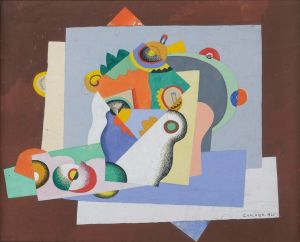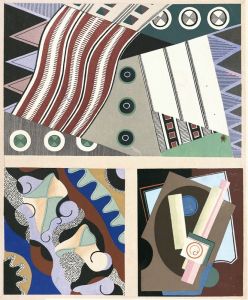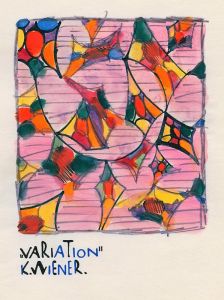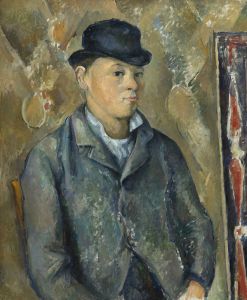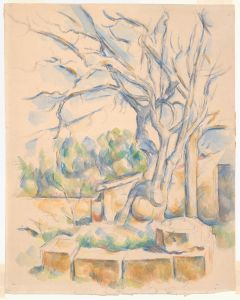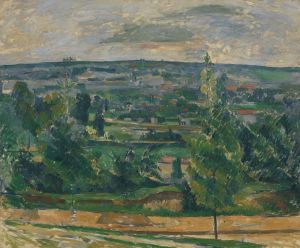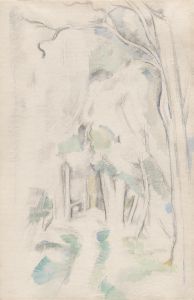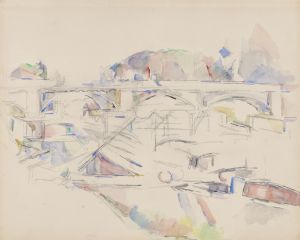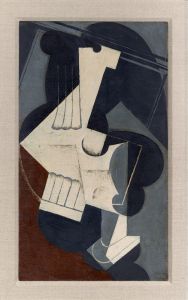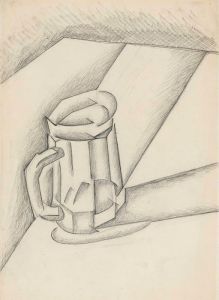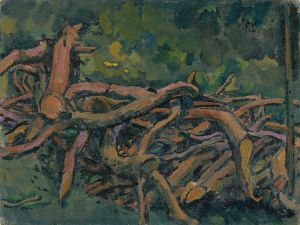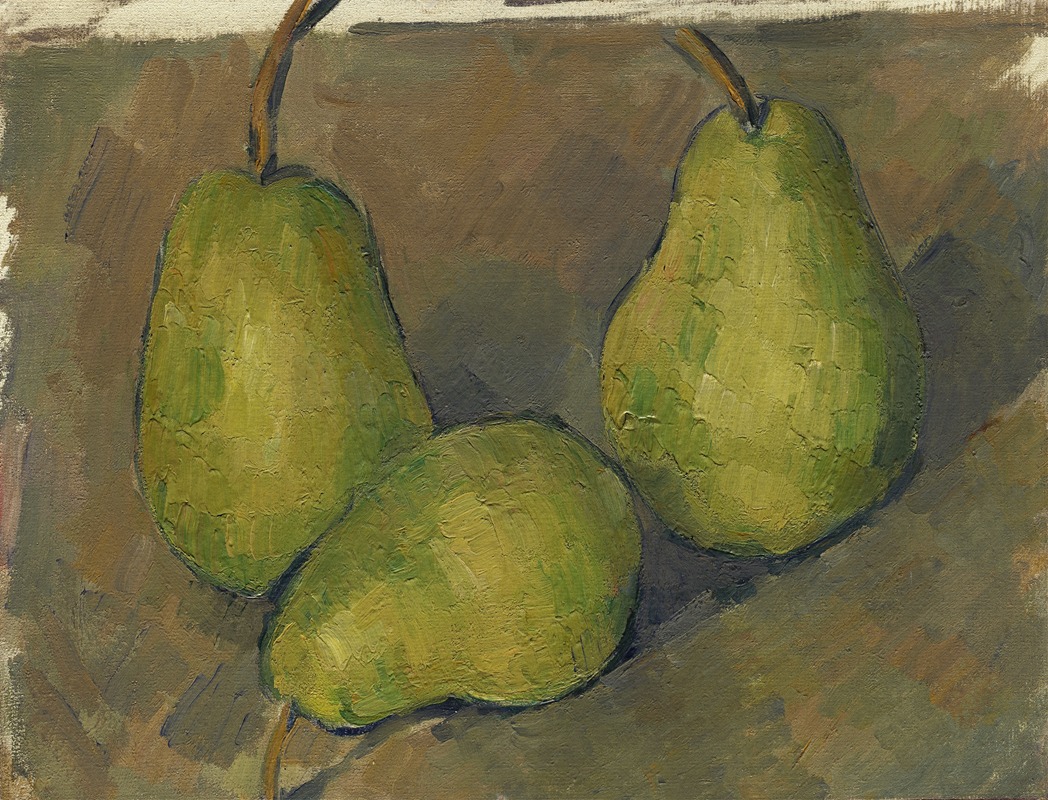
Three Pears
A hand-painted replica of Paul Cézanne’s masterpiece Three Pears, meticulously crafted by professional artists to capture the true essence of the original. Each piece is created with museum-quality canvas and rare mineral pigments, carefully painted by experienced artists with delicate brushstrokes and rich, layered colors to perfectly recreate the texture of the original artwork. Unlike machine-printed reproductions, this hand-painted version brings the painting to life, infused with the artist’s emotions and skill in every stroke. Whether for personal collection or home decoration, it instantly elevates the artistic atmosphere of any space.
Paul Cézanne's "Three Pears" is a still life painting that exemplifies the artist's innovative approach to form and composition, which significantly influenced the development of modern art. Cézanne, a French Post-Impressionist painter, is renowned for his unique method of building form with color and his analytical approach to nature, which laid the groundwork for the transition from 19th-century artistic concepts to a radically different world of art in the 20th century.
"Three Pears" is one of Cézanne's many explorations of still life, a genre that he revisited frequently throughout his career. Still life paintings allowed Cézanne to experiment with form, perspective, and color without the constraints of a moving subject. In "Three Pears," Cézanne focuses on the simple, everyday subject of pears, using them as a vehicle to explore the complexities of visual perception and representation.
Cézanne's technique in "Three Pears" reflects his departure from the Impressionist style, which emphasized capturing the effects of light and atmosphere. Instead, Cézanne sought to depict the underlying structure of objects. He employed a methodical approach, using small, repetitive brushstrokes to build up the forms of the pears. This technique creates a sense of solidity and volume, giving the pears a tangible presence that seems to extend beyond the two-dimensional surface of the canvas.
The composition of "Three Pears" is carefully arranged to create a sense of balance and harmony. Cézanne often used geometric shapes to organize his compositions, and in this painting, the pears are positioned in a way that suggests a triangular configuration. This arrangement not only guides the viewer's eye through the painting but also reinforces the stability and permanence of the objects depicted.
Color plays a crucial role in "Three Pears," as Cézanne uses a limited palette to explore the relationships between different hues. The subtle variations in color and tone help to define the form of each pear, while also creating a sense of depth and space within the composition. Cézanne's use of color is both descriptive and expressive, capturing the essence of the pears while also conveying a mood or atmosphere.
"Three Pears" is a testament to Cézanne's belief that art should not merely imitate nature but should instead reveal the underlying structure and order of the natural world. His approach to painting was both scientific and philosophical, as he sought to understand and represent the complexities of human perception. This painting, like many of Cézanne's works, challenges the viewer to reconsider the way they see and interpret the world around them.
Cézanne's influence on subsequent generations of artists cannot be overstated. His innovative techniques and ideas paved the way for the development of Cubism and abstract art, with artists such as Pablo Picasso and Georges Braque drawing inspiration from his work. "Three Pears" is a prime example of Cézanne's enduring legacy, demonstrating his ability to transform simple subjects into profound explorations of form, color, and perception.






